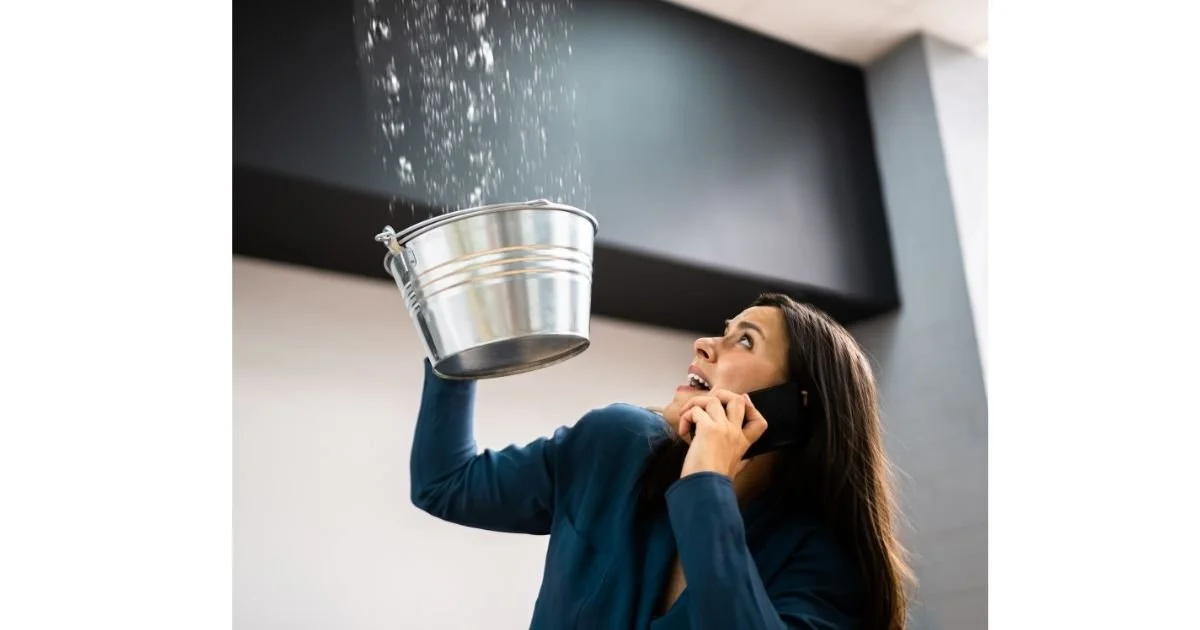Understanding IICRC Water Damage Categories: Types and Restoration Tips
We strive to arm our locals with knowledge about water damage
🏠At Fadox Construction, we educate the San Diego community about water damage through our blog, offering expert tips on prevention and restoration. We also provide 24/7 emergency services to quickly address water damage, using advanced equipment to detect and restore affected areas, ensuring your home stays safe and secure.
📞 Call Fadox Construction today at (619) 880-6554 for reliable water damage solutions in San Diego.
Water damage is a serious and often unpredictable issue that property owners face, with the potential to cause extensive damage and pose significant health risks. It can result from various factors, such as burst pipes, plumbing failures, HVAC malfunctions, sewage backups, or natural disasters like heavy rains and flooding. At Fadox Construction, we offer professional and comprehensive water damage restoration services across San Diego, ensuring your property is restored to its original state with minimal disruption.
In this extensive guide, we cover everything you need to know about water damage, including the categories and classes of damage as defined by IICRC (Institute of Inspection, Cleaning, and Restoration Certification) standards, the immediate steps you should take to protect your property, and why professional intervention is critical. Whether you’re dealing with a minor leak or a major flood, this guide serves as your go-to resource for effective and timely water damage management.
Understanding the Types of Water Damage: IICRC Categories
Water damage is classified into three main categories by the IICRC, based on the source and contamination level. Knowing these categories helps determine the right approach and protective measures required for each situation.
Percentage Occurrence Of Water Damage Categories
1. Category 1: Clean Water Damage
Category 1 water damage involves water from clean, sanitary sources, which are not immediately harmful to health. Common causes include:
Broken water supply lines
Leaking faucets or plumbing fixtures
Overflowing sinks or bathtubs with clean water
Rainwater infiltrating through open windows or doors
Although this type of water is safe, it can quickly become a breeding ground for bacteria and mold if not handled promptly. Even clean water can turn hazardous if left stagnant for too long, as it interacts with building materials and absorbs contaminants.
Steps for Handling Category 1 Water Damage:
Turn Off the Source: Shut off the main water supply to prevent further flooding and reduce the extent of damage.
Remove Standing Water: Use mops, towels, or a wet/dry vacuum to extract water as quickly as possible. Focus on keeping the area well-ventilated by opening windows and using fans.
Move Valuables: Relocate electronics, important documents, and furniture to dry areas. This will help prevent further damage and make restoration easier.
Contact Fadox Construction: We offer expert water extraction services and ensure thorough drying to prevent mold growth and structural issues.
2. Category 2: Gray Water Damage
Gray water, or Category 2 damage, contains contaminants that can cause illness or discomfort upon exposure. This type of water damage typically originates from:
Appliance malfunctions such as washing machines or dishwashers
Overflowing toilets (without solid waste)
Leaking air conditioning units or sump pumps
Gray water contains detergents, chemicals, and other harmful microorganisms. If left untreated, it can degrade into Category 3 (black water), which poses even greater health risks.
Actions for Managing Category 2 Water Damage:
Avoid Direct Contact: Wear protective gear, such as gloves, masks, and waterproof boots, before entering the affected area. Ensure you are fully protected to avoid any health risks.
Remove Porous Items: Take out carpets, rugs, and upholstered furniture, as they absorb moisture and contaminants quickly. Hang these items to dry in a well-ventilated area if possible.
Do Not Use Household Appliances: Avoid using standard fans or heaters, as they may not be effective and can spread contaminants if the water is not clean.
Engage Professional Services: Call Fadox Construction for immediate emergency water damage services. We sanitize and disinfect the area using advanced equipment to remove contaminants safely and effectively.
3. Category 3: Black Water Damage
The most hazardous form of water damage, Category 3 (black water), includes water contaminated with harmful bacteria, pathogens, and chemicals. Sources include:
Sewage backups or broken sewer lines
Flooding from rivers, oceans, or heavily contaminated groundwater
Stormwater that carries debris and pollutants
Black water poses serious health risks, and exposure can lead to severe infections, respiratory problems, and other life-threatening conditions. Proper handling requires professional-grade equipment and expertise.
Critical Actions for Black Water:
Evacuate the Area: Do not attempt to enter areas contaminated with black water without proper protective gear. Evacuate immediately and keep children, pets, and vulnerable individuals away from the area.
Shut Off All Utilities: Turn off both water and electricity to prevent further hazards, including electric shocks or additional flooding.
Call Fadox Construction: We specialize in black water cleanup and restoration, ensuring safe removal and decontamination using advanced tools and techniques. Our certified technicians handle the entire process, from water extraction to sanitization and restoration.
Assessing the Extent of Water Damage: The IICRC Classes
Beyond categorizing water by contamination level, the IICRC also classifies water damage based on the extent of water intrusion and absorption. These classes help determine the required restoration methods and equipment.
Class 1: Minimal Water Intrusion
This is the least severe form of water damage, involving minimal water absorption in a confined area. Class 1 typically affects low-permeance materials like concrete or tile. Restoration is straightforward, often requiring only localized water removal and drying.
How to Respond to Class 1 Water Damage:
Quick Water Extraction: Use towels or a wet/dry vacuum to remove water quickly. Ventilate the area by opening windows and using fans.
Inspect for Further Spread: Monitor the situation to ensure that water does not spread beyond the initial area.
Call Fadox Construction: For a professional assessment and thorough moisture check, our team uses thermal imaging and moisture meters to ensure that no hidden moisture remains.
Class 2: Significant Water Intrusion
Class 2 water damage affects larger areas and involves more porous materials, such as carpets, drywall, and wood. The water absorbs deeper into materials, making the restoration process more complex and requiring professional equipment to remove moisture effectively.
Action Plan for Class 2 Damage:
Remove Porous Items: Remove carpets, rugs, curtains, and furniture to prevent further absorption and damage. Hang these items to dry or discard them if necessary.
Enhance Airflow: Use commercial-grade fans or air movers (if available) to accelerate the drying process. However, if not sure, wait for professionals to avoid improper handling.
Engage Professional Services: Fadox Construction provides water damage repair using specialized equipment like commercial-grade dehumidifiers and air movers to extract moisture and prevent mold growth.
Class 3: Extensive Saturation Across the Entire Room
Class 3 water damage is severe, involving saturation of entire rooms, including ceilings, walls, floors, and insulation. This often results from major flooding, roof leaks, or extensive pipe bursts. Professional intervention is necessary to prevent structural damage and long-term mold issues.
Steps to Manage Class 3 Water Damage:
Evacuate the Area: Avoid entering the space if ceilings are sagging or if floors feel unstable, as the structural integrity may be compromised.
Do Not Attempt DIY Fixes: Use of professional equipment is necessary to ensure that moisture is thoroughly extracted and the environment is safe.
Call Fadox Construction: We provide advanced flood damage restoration, utilizing industrial pumps, high-powered air movers, and thermal imaging technology to locate and remove moisture thoroughly.
Class 4: Specialty Drying Situations
Class 4 is the most complex and involves water intrusion in materials with low porosity, such as plaster, brick, and stone. Water that infiltrates crawlspaces, subfloors, or other confined areas also falls into this category, requiring specialized drying techniques and equipment.
Handling Class 4 Water Damage:
Avoid DIY Attempts: Without professional tools, improper handling can cause further damage. Confined spaces and low-permeance materials require specific methods to remove water effectively.
Advanced Drying Techniques: Fadox Construction uses cutting-edge technology, including desiccant dehumidifiers and low-grain refrigerant (LGR) dehumidifiers, to extract moisture from difficult areas.
Moisture Monitoring: We continuously monitor moisture levels with advanced sensors to ensure the environment reaches safe, stable conditions before restoration begins.
Key Steps to Take Immediately After Water Damage
When dealing with water damage, prompt and informed action is critical to minimizing damage. Here are essential steps you can take while waiting for professionals:
Shut Off the Main Water Supply: Quickly locate and turn off the water source to prevent further flooding. If the source is unknown, try to contain the spread as much as possible.
Document the Damage: Photograph and record all areas affected by water damage. This documentation is vital for insurance claims and will help restoration professionals assess the full extent of damage.
Move Furniture and Belongings: Relocate electronics, valuable documents, and furniture to dry spaces. Use plastic sheets, blocks, or aluminum foil to lift furniture off the ground to reduce water absorption.
Ensure Ventilation: Open all doors and windows to increase airflow and reduce humidity levels. Proper ventilation helps slow down the growth of mold and makes the environment safer for when restoration professionals arrive.
Avoid Electrical Appliances: Do not plug in or use
⚠️ Immediate Actions for San Diego Residents Facing Water Damage
If you experience water damage in San Diego, taking quick action is critical:
Shut Off Water Supply: Locate and shut off the water source immediately.
Document the Damage: Take photos and videos for insurance claims.
Relocate Belongings: Move furniture and electronics to dry areas.
Ensure Ventilation: Open doors and windows to reduce humidity.
Avoid Electrical Appliances: Don’t use electronics in wet areas.
For professional assistance, contact Fadox Construction at (619) 880-6554 or visit FadoxConstruction.com. We are fully licensed (CSLB #1059186) and available 24/7 to handle any water damage emergency.


